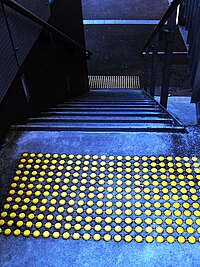
Photo from wikipedia
Background Assessing hand sensation in stroke patients is necessary; however, current clinical assessments are time-consuming and inaccurate. Objective This study aimed to explore the nature of light touch sensation and… Click to show full abstract
Background Assessing hand sensation in stroke patients is necessary; however, current clinical assessments are time-consuming and inaccurate. Objective This study aimed to explore the nature of light touch sensation and two-point discrimination (2-PD) of different hand sites in convalescent stroke patients based on somatosensory evoked potentials (SEP). Methods Light touch sensation and 2-PD of the thumb, the index finger, the little finger, thenar, and hypothenar were measured (n = 112) using sensory measurement tools. Sensory differences among the hand sites were then compared. The correlation analysis between SEP and the hemiplegic hand function was made. Sensory functions were divided into three levels: sensory intactness, sensory impairment, and sensory loss. Results Light touch sensations were mainly associated with sensory impairment in the finger and palm region. The 2-PD of the finger region was mainly sensory loss and that of the palm region was mainly sensory impairment. There was no statistical difference in the light touch sensation among the sites of the hand. The correlation coefficients between the 2-PD and SEP N20 amplitudes differed. The correlation coefficients of the thenar and hypothenar were the smallest, and that of the finger was the largest. Light touch sensation and 2-PD in patients with stroke were related to the hemiplegic hand function. Conclusion Any site on the hand could be selected as the measurement site for light touch sensation. The little finger and hypothenar may be appropriate sites when screening for 2-PD. To improve the patient’s recovery they could receive more sensory stimulation of the hand.
Journal Title: Frontiers in Neuroscience
Year Published: 2023
Link to full text (if available)
Share on Social Media: Sign Up to like & get
recommendations!